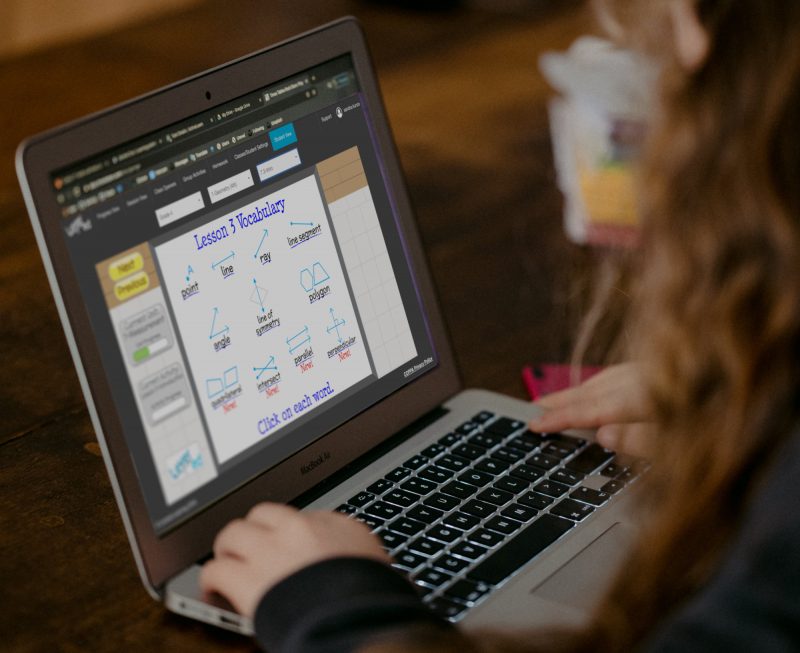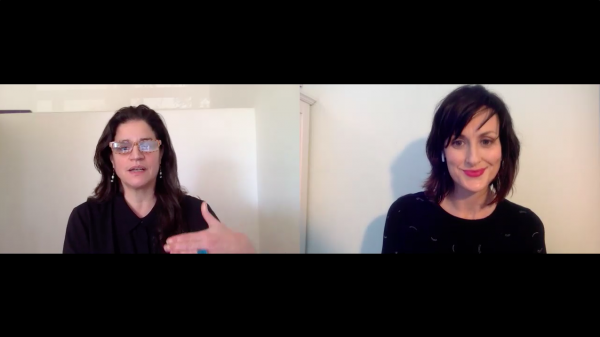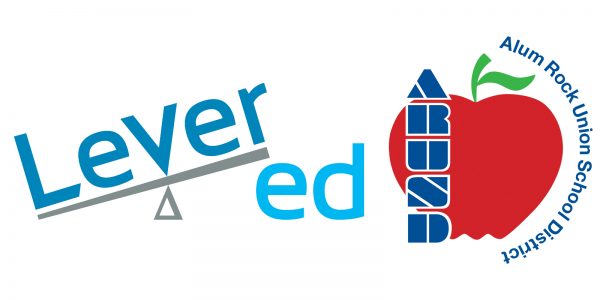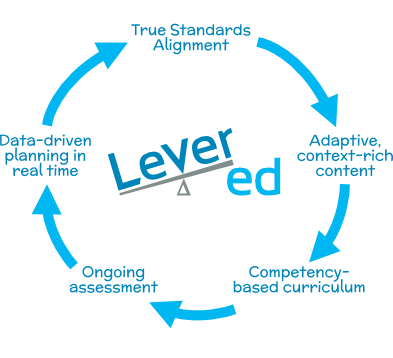Companies
Levered Students Make Gains In Math: A Distance Learning Success Story

(Contributed)
June 10, 2020 — Santa Cruz, CA
Software-as-a-service model allowed classes to resume, almost uninterrupted, as schools moved to the homes of their students and teachers
“With Levered, students have demonstrated the same success they were demonstrating when we were all together inside the classroom, now that they are at home independently” – 4th Grade Teacher, Salinas, CA
As the school year starts to wind down across the country, there has been a lot of reflection on the impact of distance learning during school closures related to COVID-19. Most recently, the Wall Street Journal released an article titled, The Results Are In for Remote Learning: It Didn’t Work(login required), pulling together several ongoing studies to paint the picture,
- “Students are likely to return in fall 2020 with approximately…37-50% of the learning gains in math”, Projecting the potential impacts of COVID-19 school closures on academic achievement.
- Progress losses have affected Black (10.3 months), Latino (9.2 months), and economically disadvantaged (12.4 months) students disproportionately to their white (6.0 months) and higher-income family counterparts (COVID-19 and student learning in the United States: The hurt could last a lifetime).
- Black, Latino, and economically disadvantaged students are less likely to have remote instruction of average or above-average quality (COVID-19 and student learning in the United States: The hurt could last a lifetime).
Looking at next year, educators fear students will not have the ability to catch up, and further school closures may worsen the problem. Even if we go into the school year with no disruption in time at school, budgets collapsing from the economic impact of COVID-19 make it impossible to fully support the learning and staffing needs for schools and districts.
As a core curriculum ed-tech math product focused on meeting the needs of the full range of students in every classroom, we have had a unique experience during this time. When closures started happening, our partner schools were up and running the same week; as teachers everywhere struggled to figure out how to keep their students learning, Levered students started logging in and continuing their progress with the same level of support from their teachers.
Classroom DNA
We built Levered’s blended learning instructional system for the classroom, with an adaptive, competency-based curriculum, a teacher dashboard providing real-time data about individual student progress, and pencil-and-paper group activities. The ongoing assessment of the individually-paced student work ties into tools for the teacher to offer whole class, small group, as well as individual intervention and enrichment. A Levered math block is dynamic, with students sharing strategies during whole class math talks before turning to independent work. At the same time, a small group gets support from their teacher on questions where they are currently struggling, while students who have shown mastery are dispatched as peer mentors, assisting their fellow students. Observing a class in session, it might be difficult to imagine maintaining the same level of engagement after schools starting closing, but that is exactly what happened.
A great system outshines good resources
Levered’s software-as-a-service (SaaS) model proved to be a catalyst to allow classes to resume, almost uninterrupted, as schools moved from their buildings to the homes of their students and teachers. Students were able to access their work from home, picking up exactly where they left off. Teachers follow along with the asynchronous progress of students on their dashboard, as well as see where kids were struggling and pull them into a video conference using Zoom, Teams, or Google Meet, providing the same one-on-one or small group intervention.
Actionable data is key
Levered is a data-driven organization. Our goal is to close the achievement gap in math, using standardized testing administered by the state as our measure of success. Over the last three years, schools have been successful at moving kids up at every achievement level. Title I schools have shown 70% growth over previous years in their first year of implementing the program (see more data here). Outsized growth at a variety of schools with diverse populations is an unlikely outcome with just curriculum. Our ongoing assessment, combined with the detailed view of what standards students are struggling with, let the teacher know what is going on with every student and allow them to meet their needs over the school year. We think of it as next-level blended learning, and when we started seeing the data of kids working from home, we saw the power of an integrated system level-up again.
The biggest challenge for schools was to get computers or Chromebooks and internet connectivity to as many students as they could. Most of our partner schools are in low-income areas, with a higher than average percentage of English Learners (ELLs), and we saw 70%, 80%, even 95% participation, daily, with an average of about 30 minutes per day, nearly what they would get in a typical math session at school. One school in San Diego Unified School District saw their active usage go up when distance learning started and had a student spending an average of 60 minutes per school day in April and several others averaging 45 minutes. Our experience is a stark contrast to the national landscape tracked by Harvard and Brown University (click here), which has found overall progress in online math decreased by 64.2% compared to January 2020, and 74.8% for low-income zip codes. The same tracker shows student participation in online math decreased by 68.9% compared to January 2020 and 78.7% for low-income zip codes.
Putting the pieces together
We have surveys, and active usage data, showing students and their teachers like to use the program, feel like they are appropriately supported and challenged, and have a sense of accomplishment as they productively struggle through the competency-based curriculum. It was a pleasant, but not unexpected, surprise to find so many engaging in their work at home. The game-changer during school closures was discovering that Levered could provide consistency and progress for schools and teachers as they deal with an uncertain future where they may have to move from classrooms to remote, and back again.
All of the data in the screenshots below is from an actual Title I school with names changed to protect student privacy.
WIth Levered, teachers know their students are progressing with their core curriculum, with standards-based assessment data available for every student, on every question at all times.
![[Screenshot] Standards-based math view](https://d24l5xnvnl541s.cloudfront.net/uploads/resource/path/89/standard-based-math-view.jpg)
Teachers have daily usage reports showing the first and last actions taken, the number of questions completed, and total active minutes, a metric that reflects time spent actively engaging with questions.
![[Screenshot] Daily Usage Report](https://d24l5xnvnl541s.cloudfront.net/uploads/resource/path/90/daily-usage-report.jpg)
Usage reports can also be run over a range of days to see the number of active days and time spent engaged over those days.
![[Screenshot] Usage Report](https://d24l5xnvnl541s.cloudfront.net/uploads/resource/path/88/distance-learning-math-report.jpg)
The teacher dashboard functions as a grade book that fills itself in, automatically grouping students based on common areas of struggle. We also provide practice questions that match the standard students are struggling with for direct instruction. Teachers can remotely lock a student or group of students’ screens, alerting them to join the teacher in a video conference setting where they can work through the problem, complete with a virtual whiteboard drawing layer.
![[Screenshot] Teacher Dashboard](https://d24l5xnvnl541s.cloudfront.net/uploads/resource/path/91/teacher-dashboard.jpg)
Rising to the challenge
We have spent the last two months working with our partner schools and teachers, learning how implementation can be improved in a classroom-to-remote flexible environment and developing features to deliver more actionable data and oversight. As we look to next year, we are listening to how we can help them be more successful, reach more students, and fill in the gaps that may have happened during this time. Our business model is not merely based on delivering a curriculum product but is a partnership to make sure the teachers have the tools to maximize their effectiveness so every student can go as far as they can in their learning. Schools pay for the system, but we work together to deliver the kind of results we know are possible with high-quality implementation. For 2020-2021 school year we are offering schools partnering with Levered,
- A 39% discount for 3-year agreements, billed annually. We want to prove our ability to move the needle for every student, if we don’t see expected results in the first year, we’d like the chance to dig in and adjust, but schools will not be obligated to use the following year.
- Free access to student curriculum to run summer programs, which can be either in person or self-directed
- Remote professional development, training, and support included
For more information, email sales@levered.com.
###








